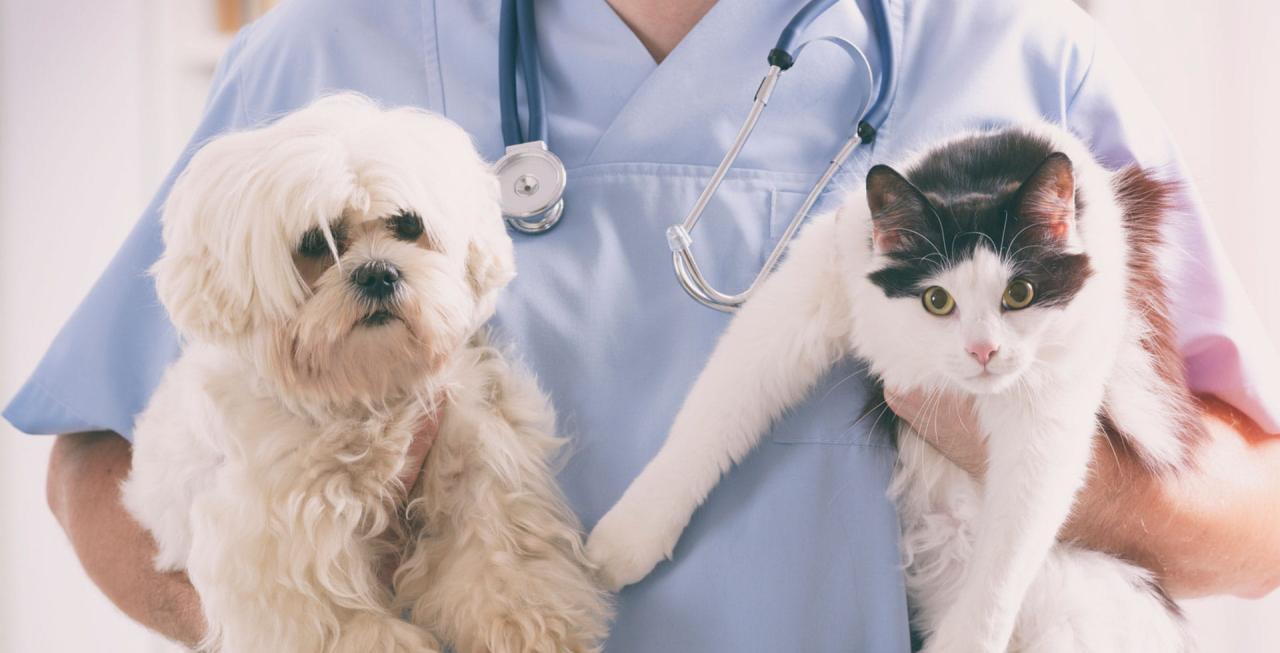The evolution of our relationship with animals has reached a profound stage where we now recognize them not just as companions, but as sentient beings with complex emotional and psychological landscapes. Just like humans, pets experience a spectrum of emotions, including joy, fear, anxiety, sadness, and even grief. This growing understanding has brought pet mental health into sharp focus, moving beyond simply addressing physical ailments to nurturing the complete well-being of our animal family members.Understanding, acknowledging, and actively supporting our pets’ mental health is crucial for their overall happiness, longevity, and for fostering a deeper, more harmonious bond between humans and animals. This comprehensive guide will explore the various facets of pet mental health, common challenges, effective strategies for support, and the evolving landscape of care in this vital area.
Why Mental Health Matters

For centuries, animals were often viewed through a simplistic lens, their behaviors attributed solely to instinct or training. However, scientific advancements in animal cognition, neurobiology, and behavior have revealed a rich tapestry of their inner lives. We now know that pets are capable of:
A. Forming Strong Attachments: They bond deeply with their human families and often with other animals.
B. Experiencing Emotions: Research indicates pets feel a range of emotions, from pure joy to distress and sorrow.
C. Learning and Adapting: Their ability to learn complex tasks and adapt to various environments showcases their cognitive capacities.
D. Responding to Stressors: Environmental changes, routine disruptions, and social dynamics can significantly impact their psychological state.
E. Developing Mental Health Conditions: Just like humans, pets can develop conditions such as anxiety disorders, phobias, obsessive-compulsive disorders, and depression.
Ignoring these mental and emotional dimensions can lead to significant behavioral problems, physical health issues (stress can suppress the immune system), and a diminished quality of life for the pet. A holistic approach to pet wellness must therefore include a strong emphasis on mental well-being.
Common Mental Health Challenges in Pets
Identifying mental health issues in pets can be challenging, as they cannot verbally express their feelings. Owners must rely on observing changes in behavior, routine, and temperament. Some of the most prevalent mental health challenges include:
A. Anxiety Disorders
Anxiety is perhaps the most common mental health issue observed in pets, manifesting in various forms.
- Separation Anxiety: This is a widespread condition, especially in dogs, characterized by extreme distress when left alone. Symptoms can include destructive chewing, excessive barking/howling, house soiling, pacing, and attempts to escape. It’s often triggered by sudden changes in routine, new environments, or the loss of a family member.
- Generalized Anxiety: Pets with generalized anxiety may appear constantly on edge, exhibiting restlessness, excessive vigilance, or an inability to relax even in familiar environments.
- Noise Phobias: Intense fear reactions to specific sounds like thunderstorms, fireworks, vacuums, or loud vehicles. Pets may hide, tremble, pace, vocalize excessively, or try to escape.
- Social Anxiety: Fear or discomfort around unfamiliar people or animals, leading to avoidance, growling, hiding, or aggressive displays.
- Travel Anxiety: Stress associated with car rides or other forms of travel, resulting in drooling, vomiting, trembling, or vocalization.
B. Phobias
Beyond noise phobias, pets can develop intense, irrational fears of specific objects, situations, or people. This can significantly limit their quality of life if the trigger is frequently encountered.
C. Depression
While harder to diagnose conclusively than in humans, pets can exhibit signs consistent with depression, often triggered by significant life changes such as:
- Loss of a companion (human or animal).
- A move to a new home.
- A significant change in routine.
- Chronic pain or illness.Symptoms can include lethargy, loss of interest in play, changes in appetite, altered sleep patterns, withdrawal, and a general lack of enthusiasm.
D. Obsessive-Compulsive Disorders (OCDs)
Repetitive, exaggerated, or sustained behaviors that seem to serve no obvious purpose and interfere with normal functioning. Examples include:
- Excessive Licking or Chewing: Often leading to “lick granulomas” on the skin.
- Tail Chasing or Spinning: Persistent circling.
- Pacing or Weaving: Repetitive movements.
- Flank Sucking: Common in Doberman Pinschers.These behaviors can be a coping mechanism for stress or anxiety, or have a genetic predisposition.
E. Age-Related Cognitive Dysfunction (Dementia)
Common in senior pets, this condition mirrors Alzheimer’s disease in humans. Symptoms (often abbreviated as DISHA) include:
- Disorientation: Getting lost in familiar places.
- Interaction Changes: Altered social interactions, less affectionate or more irritable.
- Sleep-Wake Cycle Alterations: Pacing at night, sleeping more during the day.
- House Soiling: Accidents despite being house-trained.
- Activity Level Changes: Reduced interest in play or exploring.
F. Post-Traumatic Stress Disorder (PTSD)
Pets who have experienced severe trauma (e.g., abuse, natural disasters, accidents, prolonged hospitalization) can develop PTSD-like symptoms, including hypervigilance, exaggerated startle responses, avoidance behaviors, and sudden aggression.
Recognizing the Signs

Since pets can’t tell us how they feel, recognizing changes in their behavior is paramount. Look for consistent or significant shifts in:
A. Vocalization: Excessive barking, howling, whining, meowing, growling, or unusual quietness.
B. Appetite and Thirst: Eating or drinking significantly more or less.
C. Sleep Patterns: Sleeping excessively, restlessness at night, or inability to settle.
D. Elimination Habits: House soiling in a previously trained pet, or changes in frequency/consistency.
E. Activity Levels: Lethargy, sudden bursts of energy, constant pacing, or decreased interest in play.
F. Interaction with Others: Increased clinginess, withdrawal, aggression towards familiar people/pets, or avoidance.
G. Grooming Habits: Excessive licking, chewing, scratching, or conversely, neglecting grooming.
H. Body Language: Tucked tail, flattened ears, trembling, rigid posture, lip-licking, yawning when not tired, hiding, or dilated pupils.
Any sustained change in your pet’s normal behavior warrants attention and potentially a consultation with a veterinarian or a certified animal behaviorist.
Strategies for Supporting Pet Mental Health
A multi-faceted approach, often integrating various strategies, is most effective in supporting pets with mental health challenges.
A. Environmental Enrichment
A stimulating and secure environment is fundamental to good mental health.
- Puzzle Toys and Treat Dispensers: Engage a pet’s mind and provide a sense of accomplishment.
- Interactive Play: Regular, engaging play sessions with owners strengthen bonds and provide mental stimulation.
- Safe Spaces: Providing a designated, quiet retreat (e.g., a crate, a cozy bed in a low-traffic area) where the pet can feel secure.
- Outdoor Access/Walks: Opportunities for exploration, sniffing, and exposure to new sights and sounds (in a safe, controlled manner).
- Rotation of Toys: Keeping toys novel and exciting by rotating them regularly.
B. Consistent Routine and Predictability
Pets thrive on routine. Predictable schedules for feeding, walks, playtime, and sleep can reduce anxiety.
- Scheduled Feedings: Regular meal times provide structure.
- Consistent Walk Times: Helps pets anticipate outdoor activities.
- Predictable Goodbyes/Hellos: For pets with separation anxiety, making departures and arrivals calm and low-key can help.
C. Positive Reinforcement Training and Socialization
Building confidence and good manners through positive reinforcement.
- Reward-Based Training: Focus on rewarding desired behaviors rather than punishing unwanted ones. This builds trust and confidence.
- Early and Ongoing Socialization: Exposing puppies and kittens to various sights, sounds, people, and animals in a positive way helps them develop into well-adjusted adults. For adult pets, careful, controlled socialization with friendly, calm animals can be beneficial.
D. Diet and Nutrition
A balanced, high-quality diet plays a role in brain function and mood regulation.
- High-Quality Pet Food: Ensuring a diet rich in essential nutrients, including omega-3 fatty acids (DHA and EPA), which are crucial for brain health.
- Probiotics: A healthy gut microbiome is increasingly linked to brain health (the “gut-brain axis”).
- Specific Nutrients: Some amino acids (like L-tryptophan) are precursors to neurotransmitters like serotonin, which impacts mood.
- Avoidance of Artificial Additives: Some pets may be sensitive to artificial colors, flavors, or preservatives which can affect behavior.
E. Exercise and Physical Activity
Physical exertion helps release pent-up energy, reduces stress hormones, and promotes the release of endorphins.
- Adequate Daily Exercise: Tailored to the pet’s breed, age, and energy level. This might include brisk walks, runs, swimming, or vigorous play.
- Mental Engagement During Exercise: Incorporating training cues, scent work, or agility elements to challenge their minds during physical activity.
F. Supplements and Natural Remedies
Many natural options can help support mental well-being, often used in conjunction with other strategies. Always consult a veterinarian before administering any supplements.
- Calming Pheromones: Synthetic pheromones (e.g., DAP for dogs, Feliway for cats) mimic natural calming scents and can reduce anxiety.
- L-Theanine: An amino acid found in green tea, known for its calming properties without sedation.
- Alpha-Casozepine (Zylkene): A milk protein derivative with calming effects.
- CBD (Cannabidiol): Gaining popularity for anxiety and pain relief. Crucially, ensure it’s specifically formulated for pets, accurately dosed, and free of THC, under veterinary guidance.
- Herbal Remedies: Herbs like chamomile, valerian root, or passionflower can have mild sedative or calming effects.
- Probiotics: As mentioned, supporting gut health can positively impact mood.
G. Professional Interventions
For more severe or persistent mental health issues, professional help is essential.
- Veterinary Consultation: Always the first step to rule out underlying medical conditions that could be causing behavioral changes. Your vet can also provide initial guidance and referrals.
- Certified Professional Dog Trainer/Cat Behaviorist: For behavioral modification techniques, desensitization, counter-conditioning, and management strategies. Look for certifications from reputable organizations.
- Veterinary Behaviorist: These are veterinarians with specialized training and board certification in animal behavior. They can diagnose complex behavioral disorders, prescribe psychotropic medications if necessary, and create comprehensive treatment plans.
- Medication: In some cases, especially with severe anxiety, phobias, or OCDs, anti-anxiety or antidepressant medications (prescribed by a veterinary behaviorist or a general vet comfortable with behavioral pharmacology) may be necessary to help the pet reach a state where behavioral modification can be effective. Medications are typically used as a tool to facilitate learning, not a standalone solution.
Addressing Specific Mental Health Scenarios
A. Managing Separation Anxiety
- Gradual Desensitization: Slowly increasing the time the pet is left alone, starting with very short periods.
- Counter-Conditioning: Associating owner departures with positive things (e.g., a special toy or treat only given when leaving).
- Calming Aids: Pheromones, calming supplements, or prescribed medication in severe cases.
- Ignore Greetings/Departures: Avoid making a big fuss when leaving or returning.
B. Helping with Noise Phobias
- Creating a Safe Den: A secure, sound-dampened space for the pet to retreat during noisy events.
- Desensitization and Counter-Conditioning: Gradually exposing the pet to low-volume recordings of the feared sound while pairing it with positive experiences (treats, play). This should be done with professional guidance.
- Thundershirts/Anxiety Wraps: Compression garments that can provide a sense of security.
- Medication: For severe cases, situational anxiolytics might be prescribed.
C. Supporting Senior Pets with Cognitive Decline
- Consistent Routine: Maintaining predictable schedules helps reduce confusion.
- Environmental Adjustments: Keeping furniture in place, adding night lights, using ramps for stairs.
- Brain-Boosting Diets/Supplements: Diets formulated for senior cognitive health, or supplements like SAMe, antioxidants, and Omega-3 fatty acids.
- Gentle Mental Stimulation: Puzzle toys, gentle training sessions.
- Veterinary Consultation: To rule out other medical issues and discuss medications like selegiline, which can help some pets with cognitive dysfunction.
The Evolving Landscape of Pet Mental Health
The field of pet mental health is continually advancing, mirroring developments in human psychology and neuroscience.
A. Increased Research: More studies are focusing on pet cognition, emotion, and the efficacy of various behavioral therapies and medications.
B. Technological Aids: Smart cameras allow owners to monitor behavior remotely, and some wearables might track physiological indicators of stress. Interactive toys offer mental stimulation when owners are away.
C. Specialized Professionals: The number of board-certified veterinary behaviorists and certified applied animal behaviorists is growing, providing expert care.
D. Public Awareness: Social media and educational campaigns are increasing public understanding and reducing the stigma associated with pet mental health issues.
E. Holistic Integration: A greater emphasis on integrating behavioral medicine with nutritional, environmental, and complementary therapies for a comprehensive approach.
F. Telemedicine for Behavior: Online consultations with behaviorists are becoming more common, increasing accessibility.
The Pet Owner’s Role: Advocate and Caregiver
As pet owners, we are our animals’ primary advocates. Our role in their mental health is paramount.
A. Be Observant: Pay close attention to subtle changes in your pet’s behavior and routine. You know your pet best.
B. Be Proactive: Don’t wait for a problem to become severe. Address concerns early.
C. Seek Professional Guidance: Recognize when a problem is beyond your capacity to handle and reach out to qualified professionals.
D. Be Patient and Consistent: Behavioral modification takes time, patience, and consistency. There are no quick fixes.
E. Provide a Loving and Secure Environment: The foundation of good mental health is a stable, nurturing home where your pet feels safe and loved.
F. Educate Yourself: Learn about normal pet behavior, body language, and common mental health challenges.
Conclusion
The focus on pet mental health is an essential evolution in responsible pet ownership. Recognizing that our animal companions have rich inner lives, experience emotions, and can suffer from psychological distress empowers us to provide a more complete and compassionate level of care. By understanding the signs of mental health challenges, providing appropriate enrichment, maintaining consistent routines, and seeking professional help when needed, we can significantly enhance their well-being.
Nurturing a pet’s mental health is a profound act of love that strengthens the incredible bond we share. It ensures they not only survive but truly thrive, leading happier, healthier, and more fulfilling lives as cherished members of our families. The journey to supporting their minds is as vital as caring for their bodies, leading to a deeper understanding and appreciation of the wonderful creatures we share our lives with.











